It’s your first vegetable garden and you’re so excited! You buy the plants, sow the seeds, start watering. . . and a few weeks later are totally discouraged and want to give up. This doesn’t have to be you, and it doesn’t mean you are cursed with a brown thumb.
Here are 7 things NOT to do when you start gardening for the first time. Almost all new gardeners give up on their garden because of these simple, preventable mistakes. When you avoid these beginner mistakes, your flowers, vegetables, fruits, herbs, and other plants in your garden will flourish!
By avoiding these garden No-No’s, you’ll be able to succeed with your garden the first time. Take the jumpstart and learn from my own mistakes instead of experiencing it yourself!
P.S. Once you’ve read how not to garden, head on over to this collection of posts on how to start a garden, no matter what type or size.
1. Overcrowding
Plants are just like people, they need room to breathe, nutrients to live, and the spectacular sun. When plants are too close together, there is a lack of air flow, not enough nutrients, and a shortage of attention from the sun. Jam-packed gardens can cause fungal problems, stress, and ultimately leads to your plants dying.
Fix: Simply looking at the soil planting instructions on seed packets or researching the plants online can help a lot!
Remember: Less = More! Try to remember that a single plant with access to water and nutrients will surpass two plants fighting for the same things.
2. Not Knowing Your Soil
Did you know there are more than 6 different types of soil? Did you know plants can die if they’re in the wrong type of soil? Clay soil can deprive some plant roots of oxygen, while sandy soil doesn’t always retain any nutrients or minerals. Not knowing your soil will singlehandedly kill your garden!
Fix: You can simply improve your soil by knowing what type it is and improving it with a variety of supplements, such as organic fertilizer, composting, or manure. A soil test will tell you exactly what is in your garden and how to work with it. Most local Departments of Agriculture & Consumer services provide soil tests to their residents for free to improve their yard or garden. So contact them first before purchasing a soil test kit online.
3. Overwatering
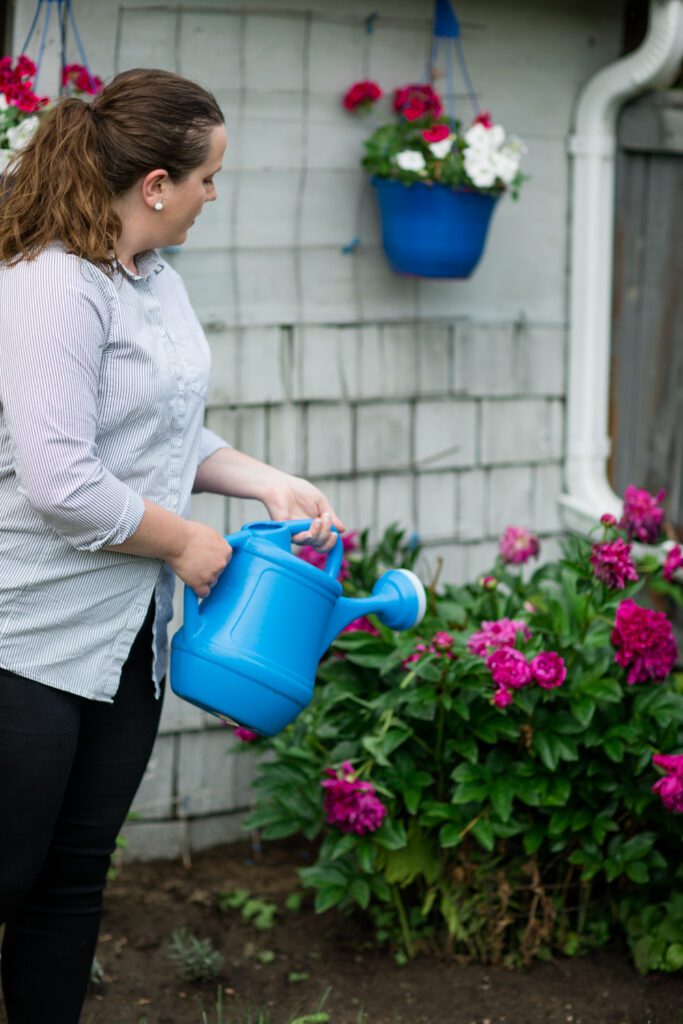
Most people think more water, the better! However, this is the complete opposite for plants. Overwatering can lead the plants to drown, or invite mold to kill the roots.
Fix: Only water when your plant needs it! You can do this by sticking your finger in the soil about 2 inches. If it is dry = water! If it is not dry = don’t water!
Tip: It is better to water deep every few days, rather than a little bit everyday. Watering every few days allowed for deep watering which gives our plants deeper roots. It is also better to water in the earlier part of the day, since damp conditions during night can invite mould.
Side note: if the only time you have to water your plants is in the evening, don’t let that stop you from watering them. Plants with enough water in the evening are much better than a dehydrated plant because you couldn’t water at the right time.
4. Too Little or Too Much Sun
Gardening in the wrong place in your yard can be deadly to plants. For example, roses love sun but ferns do not. Some plants, like most vegetables and fruit, require full sun to grow which means 6-8 hours of direct sunlight. When a plant gets too much sun than it requires, dehydration occurs. When a plant gets too little sun they cannot feed themselves through photosynthesis! Therefore, too much or too little sun can cause your plants do die!
- 30 Vegetables, Fruits and Herbs that can tolerate shade.
- 27 Annual and Perennial Flowers that can survive intense sun
Fix: Plant your garden based on the sunlight availability in your yard! Then garden certain plants amongst your yard that you know will meet the sunlight requirements of the plant. From here, you will be able to make your garden reach its full potential!
5. Killing All Bugs
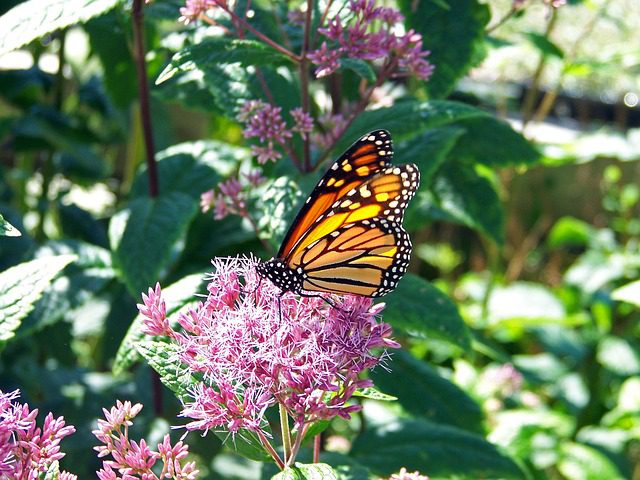
Many beginners believe that any bug in the garden is a bad bug, and is killing your plants! This causes many beginners to grab pesticides and spray them amongst your garden! Most people don’t consider that pesticides can kill beneficial insects that would have feasted on pest insects. Most plants need some form of pollination through bees, butterflies, and more! But you need these creatures to let your shine!
Fix: Get rid of the harmful and chemical pesticides. Let nature work it’s way amongst your garden, and don’t panic pesticide! Use organic or natural pesticides first, and only use chemicals as a last resort.
Tip: Ask your neighbours with a garden in the area what kind of pests they deal with and how they fix them. This gives you an advantage of being ahead of the game. Gardeners are a very friendly bunch, and most are excited to help you out and chat about their gardens.
6. Over-Fertilizing with The Wrong Fertilizer
You may be asking “Is over-fertilizing even possible?” And the answer is YES! Yes it is! An excessive amount of fertilizer can burn your plants, not allow for fruits or flowers to grow, or causes fast growth, leaving an unnecessary large amount of foliage.
Many newbie gardeners get excited and fertilize, fertilize, fertilize! Picking the wrong fertilizer may damage your plants and not allow vegetation to grow.
Fix: Learn what kind of nutrients your plant needs and know how much to apply. You can find what kind of fertilizer to use of the plant packet or giving it a quick search on the internet. If the thought of a bunch of different fertilizers is overwhelming, use a good water-soluble all-purpose fertilizer, or water with compost tea once a week or every two weeks.
7. Giving Up
Did your first garden die? It’s okay! New gardeners frequently feel overwhelmed, ashamed, or disappointed that their garden wasn’t what they pictured.
Fix: Do not give up! Learn the lessons that your garden taught you from the first season. Even pro-gardeners have their setbacks! Focus on the successes you had you had this season, learn from them, and just keep on growing!
NEED HELP IN THE GARDEN?
Green thumbs aren’t just given out at birth. They’re a combination of learning about gardening and trial and error. If you wish you knew more about gardening and had more confidence in your abilities, you need the Growing Roots Gardening Guide.
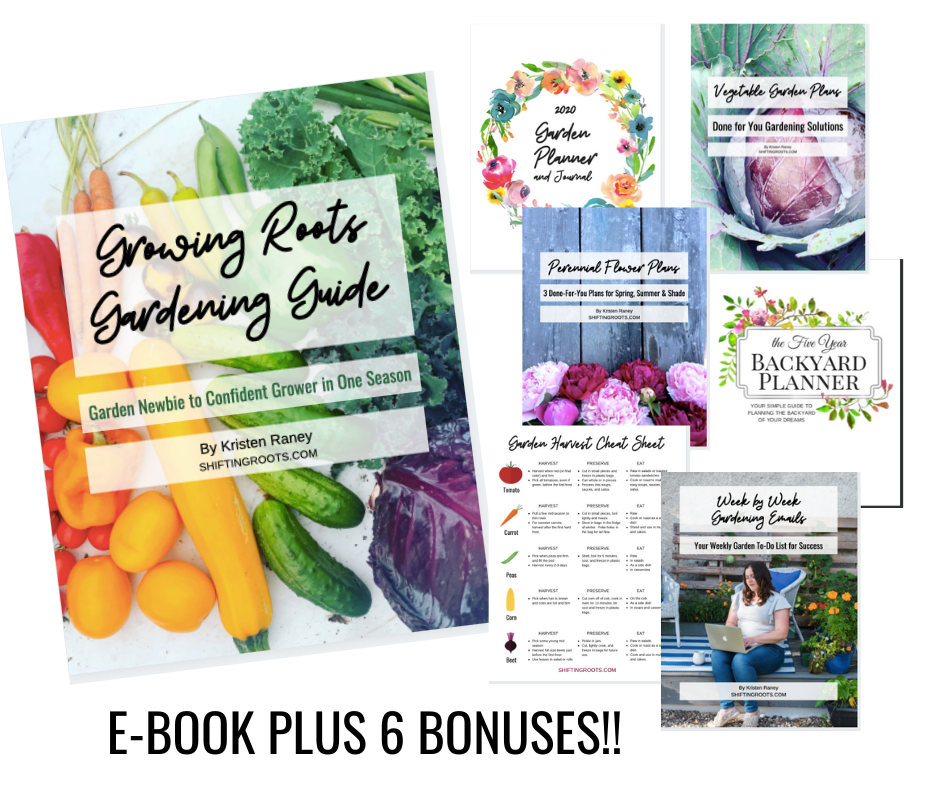
It’s an e-book plus 6 bonuses–everything you need to go from complete garden newb to confident in one growing season. Get all the details of what’s inside here.
Ready to grow? Click this button and buy now:

Happy gardening!
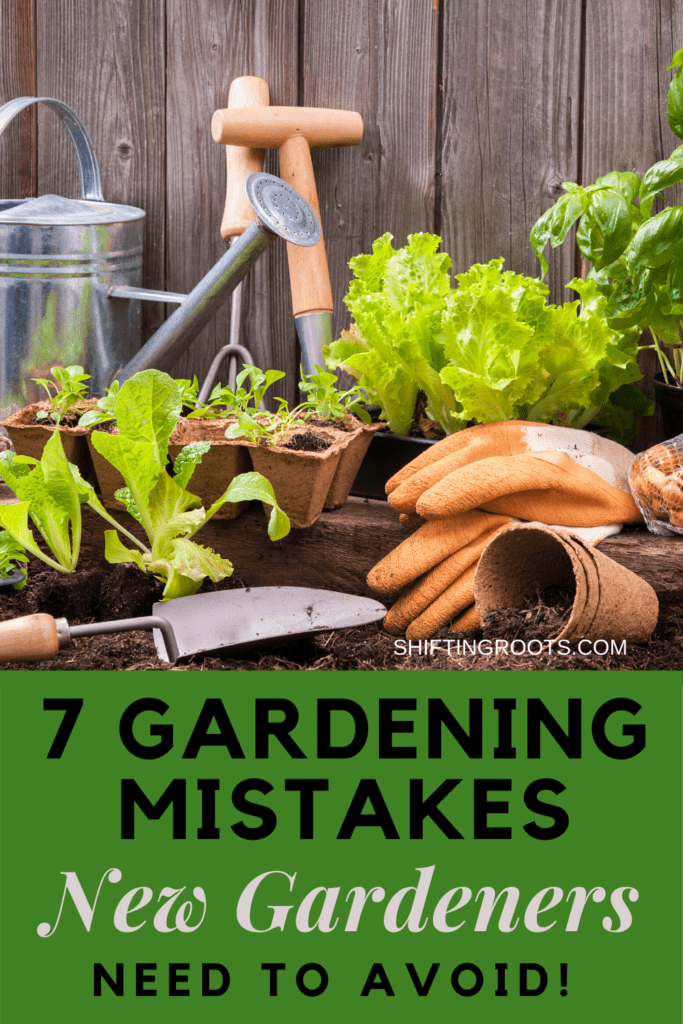
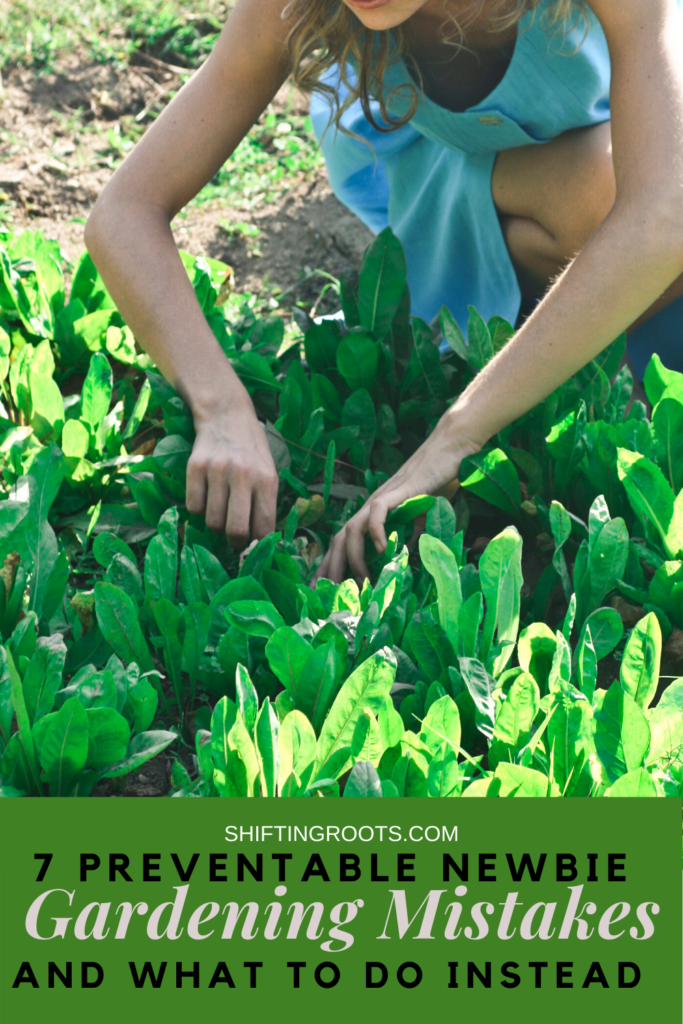
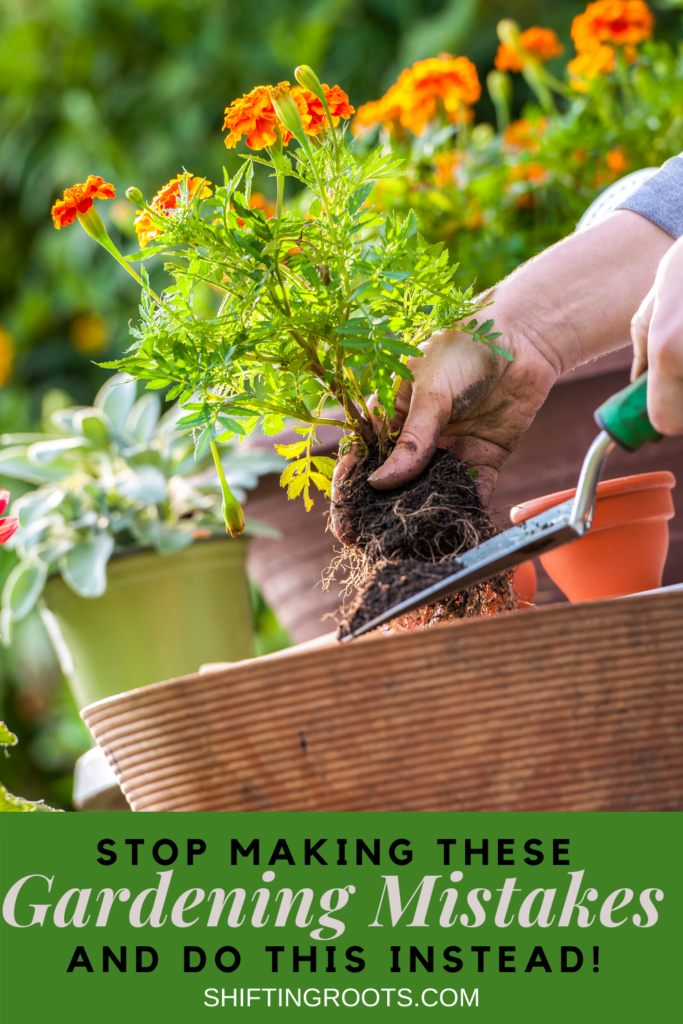
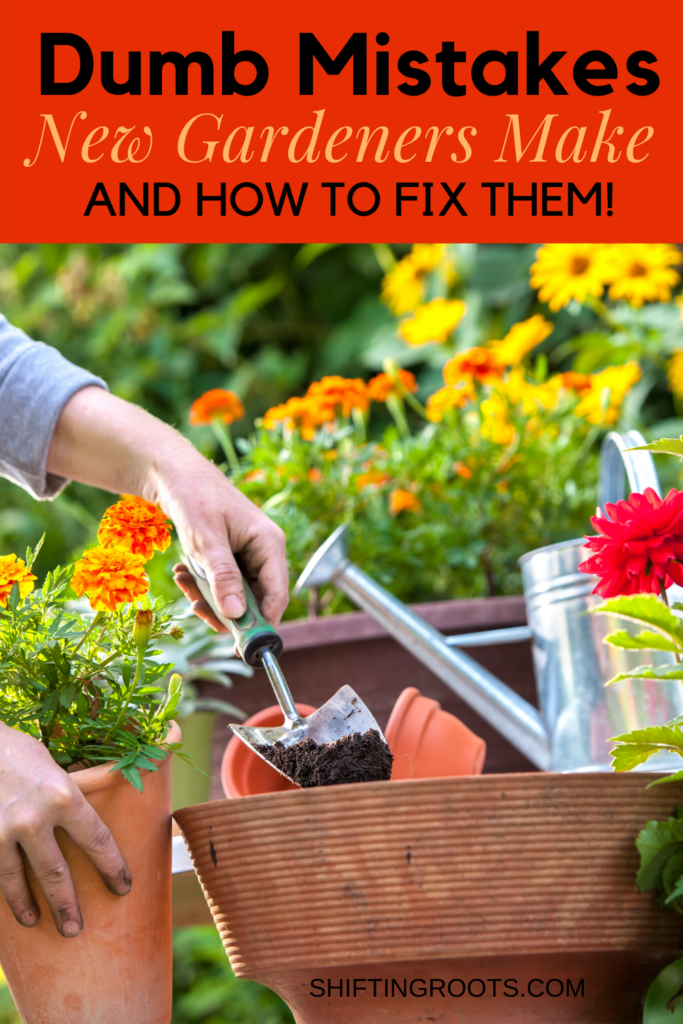

Join the conversation